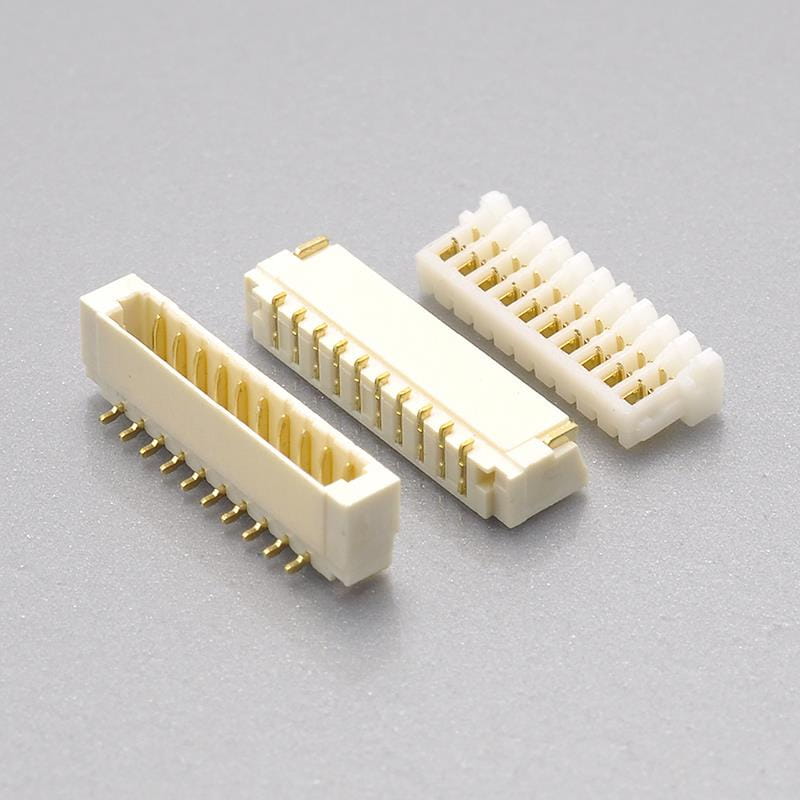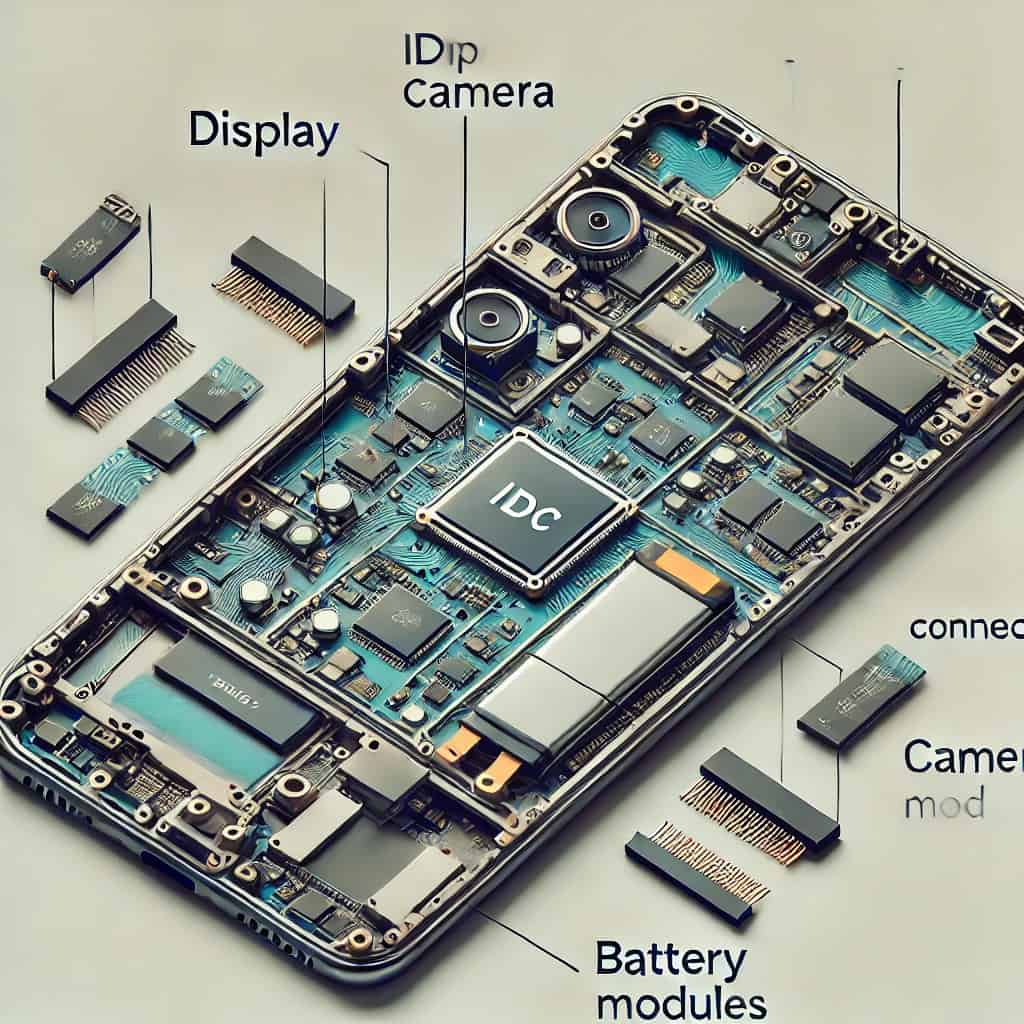In the rapidly evolving world of electronics, ensuring robust and reliable connections is crucial, and that’s where we at Konnra come in. As a leading connector and wiring harness manufacturer, we understand the importance of efficient and dependable components. One such essential component is the IDC connector (Insulation Displacement Connector), which has become a staple in various devices, from consumer electronics to industrial machinery. In this article, Konnra will guide you through the basics of IDC connectors, their working principles, and their diverse applications. So, let’s dive in and explore the world of IDC connectors together!

What is an IDC Connector?
An IDC connector is a type of electrical connector designed to connect insulated wires without the need to strip the insulation. This unique feature makes IDC connectors highly efficient and reliable for a wide range of applications. They consist of a plastic housing with metal contacts that cut through the insulation of the wire to establish a secure electrical connection.
IDC connectors are commonly used in ribbon cables and multi-wire applications where space and reliability are crucial. These connectors are favored for their ability to provide consistent and stable connections, which are essential in many electronic devices.
Components of IDC Connectors
IDC connectors typically comprise the following components:
Plastic Housing: This encases the metal contacts and provides structural integrity.
Metal Contacts: These are sharp enough to pierce the insulation of the wire, making the electrical connection.
Slots: Designed to accommodate wires of specific gauges.
Types of IDC Connectors
IDC connectors come in various types, tailored to specific applications:
Ribbon Cable Connectors: Used for flat ribbon cables.
Single Wire IDC Connectors: Suitable for connecting individual wires.
Multi-Wire IDC Connectors: Used in applications requiring multiple connections.
Basic Principle of IDC Connectors
The fundamental principle behind IDC connectors is the insulation displacement connection method. Here’s how it works:
1. Insulation Displacement:
When a wire is pressed into the IDC connector’s slot, the sharp edges of the metal contacts cut through the insulation layer of the wire. This process ensures that the metal conductor of the wire makes direct contact with the metal contacts of the connector.
2. Gas-Tight Connection:
The displacement of insulation creates a gas-tight connection, preventing corrosion and ensuring long-term reliability. This type of connection is particularly beneficial in environments exposed to moisture and other corrosive elements.
3. Secure Electrical Contact:
The direct contact between the conductor and the metal contacts ensures a stable and secure electrical connection, reducing the risk of disconnections or signal loss.
Application of IDC Connectors in Consumer Electronics
In the realm of consumer electronics, IDC connectors are integral to the performance and reliability of devices such as smartphones, tablets, and laptops.
Importance in Consumer Electronics
- Space Utilization:Modern consumer electronics require compact and efficient use of space. IDC connectors are designed to be small and versatile, fitting seamlessly into the compact interiors of these devices.
- Reliable Connections:With the increasing complexity of electronic devices, the need for reliable connections becomes paramount. IDC connectors provide stable and consistent connections, ensuring that components such as displays, storage devices, and motherboards function correctly.
Case Study: Smartphones
In smartphones, IDC connectors are used extensively to connect various internal components. For example:
Display Connections: IDC connectors ensure stable connections between the motherboard and the display, providing clear and uninterrupted visuals.
Battery Connections: Reliable power connections are crucial for battery performance and safety. IDC connectors are used to securely connect the battery to the main circuitry.
Peripheral Connections: Components like cameras, sensors, and speakers rely on IDC connectors for their connectivity.

Benefits in Consumer Electronics
Durability: Designed to withstand the wear and tear of everyday use.
Performance: Maintains high data transfer speeds and signal integrity.
Ease of Assembly: Simplifies the manufacturing process, reducing costs and production time.
Application of IDC Connectors in Automotive Electronics
The automotive industry is another sector where IDC connectors play a vital role. Vehicles today are equipped with numerous electronic systems that require robust and reliable connections.
Role in Automotive Electronics
- Electrical Systems:IDC connectors are used in the wiring harnesses that connect various electrical components in a vehicle. These connectors are designed to withstand the harsh conditions found in automotive environments, including extreme temperatures and vibrations.
- Infotainment Systems:Modern vehicles feature complex infotainment systems that require numerous connections for displays, audio systems, and controls. IDC connectors ensure that these systems function reliably and efficiently.
Case Study: Infotainment Systems
In a typical car’s infotainment system:
Display Interfaces: IDC connectors are used to connect the central control unit with the display screen, ensuring clear visuals and responsive touch controls.
Audio Connections: The connectors provide stable connections for audio components, delivering high-quality sound without interruptions.
Control Modules: Various control modules within the infotainment system are interconnected using IDC connectors, ensuring seamless operation.
Benefits in Automotive Electronics
Resistance to Vibration: Secure connections that do not loosen over time.
Temperature Tolerance: Operate efficiently in a wide range of temperatures.
Reliability: Ensures continuous operation of critical automotive systems.
Application of IDC Connectors in Industrial Equipment
In industrial settings, IDC connectors are essential for maintaining efficient and reliable operations in machinery and automation systems.
Use in Industrial Equipment
- Automation Systems: IDC connectors are used in automated machinery and robotic systems to connect sensors, actuators, and control units. These connectors ensure that signals are transmitted accurately and reliably, which is crucial for automation.
- Durability and Reliability: Industrial environments can be harsh, with exposure to dust, moisture, and mechanical stress. IDC connectors are designed to withstand these conditions, providing durable and reliable connections.
Case Study: Automated Assembly Lines
In an automated assembly line:
Sensor Connections: IDC connectors are used to connect various sensors to the control system, ensuring accurate data transmission for monitoring and control.
Actuator Interfaces: Actuators that perform tasks such as welding, cutting, or assembling rely on IDC connectors for their power and control connections.
Control Systems: The central control units that manage the entire assembly process are interconnected using IDC connectors, ensuring seamless communication and coordination.
Benefits in Industrial Equipment
Robustness: Built to endure industrial stresses.
Efficiency: Simplifies maintenance and reduces downtime.
Flexibility: Easily integrated into various systems.
Application of IDC Connectors in Medical Devices
Medical devices require the highest levels of reliability and precision, and IDC connectors meet these demands effectively.
Importance in Medical Devices
- Diagnostic Equipment:Devices such as MRI scanners, CT machines, and ECG monitors rely on IDC connectors for their internal connections. These connectors ensure that signals are transmitted accurately, which is vital for diagnostic accuracy.
- Patient Monitoring Systems: IDC connectors are used in patient monitoring systems to connect various sensors and displays. Reliable connections are crucial for real-time monitoring and timely medical interventions.
Case Study: Patient Monitoring Systems
In a hospital’s patient monitoring system:
Sensor Connections: IDC connectors are used to connect sensors that monitor vital signs such as heart rate, blood pressure, and oxygen levels.
Display Interfaces: Reliable connections between the monitoring devices and display screens ensure that medical staff can continuously monitor patients’ conditions.
Alarm Systems: IDC connectors ensure that alarms and alerts are accurately triggered, allowing for quick response to any critical changes in patients’ conditions.
Benefits in Medical Devices
Precision: Ensures accurate readings and data transmission.
Reliability: Critical for patient safety and effective treatment.
Compliance: Meets stringent medical standards and regulations.
Conclusion
If you’re looking for a top-notch IDC connector for your projects, we highly recommend the KR0800 Series SUR IDC Connector. This product from Konnra is designed to deliver exceptional performance and durability, making it the perfect choice for various applications. With its superior design and reliable connections, the KR0800 Series ensures that your devices function flawlessly.
Ready to upgrade your connections? Visit the Konnra website to learn more about the KR0800 Series SUR IDC Connector and explore our extensive range of connectors and wiring harnesses. Let Konnra help you find the perfect solutions for your electronic needs.









